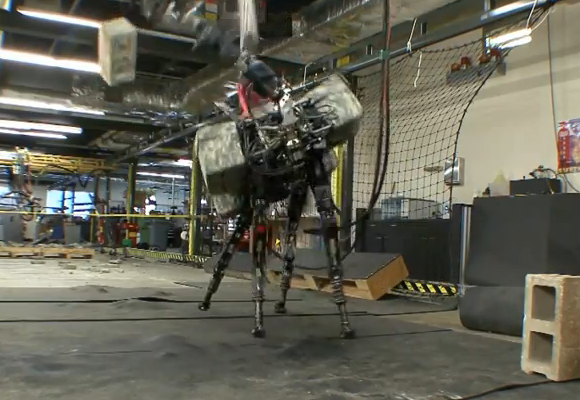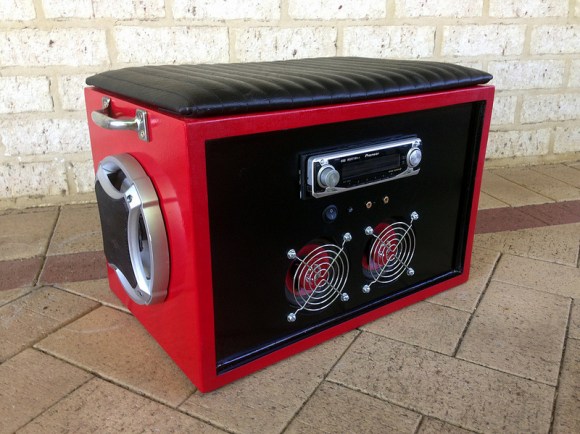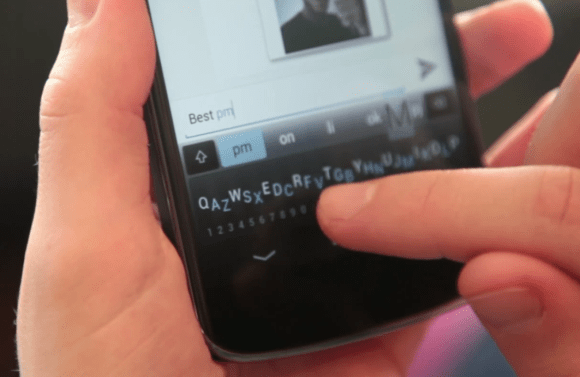
It’s as if giving cheetah-like speed to an advanced robot wasn’t good enough. The engineers over at Boston Dynamics must have been thinking to themselves, how can we make this thing even more menacing? The answer seems to be adding a highly dexterous articulated arm that gives the robot the ability to chuck objects as heavy as cinder blocks. We’re not kidding, look at the image above and you’ll see one mid-flight in the upper left. A quick search tells us that block probably weighs 30 pounds!
BigDog is a research project for the US military that we’ve seen navigating all kinds of terrain. It’s a heavy lifter able to carry loads where other machinery cannot. But now they’ve added an appendage that reminds us of an elephant’s trunk. It branches off of BigDog’s body where a quadruped’s neck would be. At the end of the appendage is a gripper that looks much like what you’d seen on industrial assembly robots. But enough talk, click through to see the action video. Oh, and if you didn’t pick up on the cheetah reference we made earlier you’ll want to check out this post.
















